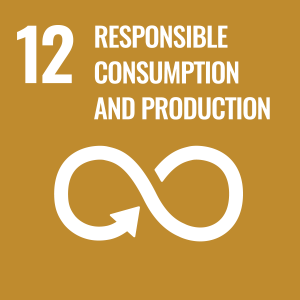
Dr Nikolas Thomopoulos
About
Biography
Dr Nikolas Thomopoulos is an Associate Professor in Transport, co-leading the Sustainable Transport & Mobility Programme of the Institute for Sustainability at the University of Surrey. His research interests include new mobility services and their user-centred evaluation to benefit businesses and society.
He is regularly invited to speak about transport and travel and previously he was an academic visitor at the Joint Research Centre of the European Commission, the Chair of a RSA Research Network on 'smart' and 'green' regional growth, a contributor to the planning of the Surrey MaaS project and a member of UK academic missions to Brazil and China. In addition to being an evaluator of funding proposals, a member of Technical Programme Committees of large conferences, he has delivered keynote presentations at conferences, hosted international workshops, co-edited books and special issues about ICT for transport, urban mobility futures and Automated Vehicles. He was the Principal Investigator of the University of Surrey Living Lab leading a project focusing on Active Travel, a UK representative at the Global Digital Human Rights Network and the elected Chair of WISE-ACT (Wider Impacts and Scenario Evaluation of Autonomous and Connected Transport), a research network of 200 experts in 42 countries. In 2024 he was elected as a WG Leader of BOPALiM (2024-2028) and in 2025 he was invited as a Visiting Scholar (2025-2028) to offer his research and teaching expertise at the University of Ljubljana. His current research activities (R-Map 2024-2027) evaluate the effects of remote work on transport and society.
Having more than 20 years teaching experience at both undergraduate and postgraduate levels has contributed in understanding the needs to enhance the learning experience of home and overseas students. He has successfully supervised MSc and PhD dissertations, whilst he has delivered guest lectures at LSE, UCL, UPV and Westminster, including the delivery of executive education courses to British Government officials and to executives in Vietnam.
Before joining Surrey, he was a researcher at the London School of Economics and Political Science and at the Institute for Transport Studies of the University of Leeds, where he was also a Marie Curie fellow. He studied economics at the University of Macedonia in Greece, then completed his MSc at the University of Oxford and subsequently acquired his PhD from the University of Leeds. Following his studies in Greece, Germany and the UK he has contributed in a range of FP-6, FP-7, H2020, Horizon Europe funded research projects and has advised start-ups as an independent business consultant. In the build-up to COP-21 he co-ordinated research within the New Climate Economy project which was funded by national governments, and collaborated with established academics and practitioners across the globe. In 2015 he was an advisor for the Best Conceptual Project of the London Planning Awards. His research and consultancy outputs at Surrey contribute in making local, national and international impact.
University roles and responsibilities
- Institute for Sustainability Programme Leader: Sustainable Transport & Mobility
- Lead Academic Integrity Officer for SHTM
- School Research Seminar Series Co-ordinator
My qualifications
Previous roles
Affiliations and memberships
News
In the media
ResearchResearch interests
- Wider impacts of autonomous, automated and electric vehicles
- Managing transport to improve tourist wellbeing
- Data and privacy management policies
- Lifelong & Community Mobility
- Urban mobility innovation
Research projects
R-Map is a Horizon Europe project focusing on: Mapping the effects of remote working arrangements in urban and rural areas. Role: Surrey PI.
Building Opportunities for Participation and Accessibility through Lifelong Community Mobility. Role: WG4 Leader.
Active Travel for SchoolsActive travel scheme evaluation for Surrey County Council. Role: Co-I.
WE-TRANSFORM is a H2020 project focusing on the impact of transport automation on the workforce. Role: WP Leader, Surrey PI.
Ready2DriveReady2Drive is a HEIF project focusing on the use of technology to support driving and accessibility for the aged. Role: PI.
Wider Impacts and Scenario Evaluation of Autonomous and Connected Transport. Role: Chair.
Human centred EVs and AVsIncorporating the human aspect in the design and development of Electric and Autonomous Vehicles. Role: Co-I.
ESRC-IAA project about co-creating accessible futures through New Mobility Services. Role: PI.
Research interests
- Wider impacts of autonomous, automated and electric vehicles
- Managing transport to improve tourist wellbeing
- Data and privacy management policies
- Lifelong & Community Mobility
- Urban mobility innovation
Research projects
R-Map is a Horizon Europe project focusing on: Mapping the effects of remote working arrangements in urban and rural areas. Role: Surrey PI.
Building Opportunities for Participation and Accessibility through Lifelong Community Mobility. Role: WG4 Leader.
Active travel scheme evaluation for Surrey County Council. Role: Co-I.
WE-TRANSFORM is a H2020 project focusing on the impact of transport automation on the workforce. Role: WP Leader, Surrey PI.
Ready2Drive is a HEIF project focusing on the use of technology to support driving and accessibility for the aged. Role: PI.
Wider Impacts and Scenario Evaluation of Autonomous and Connected Transport. Role: Chair.
Incorporating the human aspect in the design and development of Electric and Autonomous Vehicles. Role: Co-I.
ESRC-IAA project about co-creating accessible futures through New Mobility Services. Role: PI.
Supervision
Postgraduate research supervision
Currently supervising three Post-Graduate Researchers supported by the University of Surrey and Hong-Kong Polytechnic, funded through different sources. Research areas for PhD supervision cover the intersection of transport, tourism, environmental and socio-economic research, with a particular focus on management and policy challenges. Always willing to consider high quality research proposals in these areas linked to my projects and publications by interested PhD applicants.
Teaching
- Travel and Transport (UG)
- Land Transport Systems (UG)
- Sustainability in Aviation and Tourism (UG)
- International Transport Policy and Planning (UG)
- Understanding the Travel and Tourism Industries (UG)
- Strategic Analysis of Hospitality Companies (UG)
- Strategic Management of International Hotel Companies (PG)
- Research Methods (PG)
- Dissertation supervision (PG)
Sustainable development goals
My research interests are related to the following:






Publications
The collected data on remote work among urban and rural workers are presented in this publication, emphasizing differences in perceived flexibility, adaptability, preferences, career impacts, well-being, and productivity. The survey, conducted via Prolific between July and August 2024, captured data from 20,013 participants globally with European nationality, offering insights into the benefits and challenges faced by remote workers. Beyond its initial scope, the dataset can be reused to support a wide range of future studies and policy development initiatives. For instance, researchers can utilize this dataset to explore trends in work-life balance, productivity, and urban policy and planning related to remote work. Additionally, urban planners and policymakers can leverage the data to inform strategies for urban and regional development, infrastructure forecasting, planning, and community support in diverse geographic areas. The dataset’s granularity on socio-economic factors makes it an invaluable resource for developing targeted policies that address urban-rural disparities and foster sustainable remote working arrangements across Europe.
Electric Vehicles (EVs) have emerged as a promising solution to meet the sustainability goals of the transport sector, particularly in the short term. A large number of countries have introduced initiatives and policies to encourage the adoption and transition to EVs. However, the market share of EVs remains relatively low in comparison to Internal Combustion Engine vehicles, largely due to various concerns by users. This article, proposes an integrated model combining the Theory of Planned Behaviour and the Value-Belief-Norm theory, to specifically incorporate past EV driving experiences of current users and understand the factors influencing their EV purchase intentions in the context of China. Findings identify attitudes and personal norms as the primary drivers of EV purchase intentions, with a significantly positive correlation between past EV driving experiences and the intention to purchase an EV. In addition, specific latent variables such as attitudes toward EVs, personal norms, subjective norms and perceived behaviour control partially mediate this relationship. The socio-demographic analysis indicates that female consumers, highly educated and middle-aged individuals, as well as residents of relatively more developed regions show a higher likelihood of purchasing EVs, based on their past EV driving experiences. These insights can add value for key stakeholders such as EV manufacturers, retailers, government authorities and policymakers when formulating more effective policies supporting the Sustainable Development Goals.
Active travel has been at the core of attempts to promote sustainable mobility and contribute towards the Sustainable Development Goals, whilst creating more liveable cities. Cycling has been featuring as a prominent alternative or at least complement to car-centric urban planning and it has an established contribution in local and regional economic development. Nonetheless, the uptake has been quite low and stagnant in large parts of Europe. Electric bicycles, namely e-bikes, have rejuvenated interest, largely due to the support they offer to overcome any local or regional geomorphological challenges. Yet, distribution of e-bikes and their required infrastructure have reintroduced debates linked with equity and inclusion.
This paper aims at evaluating docked e-bike schemes in selected cities across Greece to offer evidence and insight about improving current plans and policies. An urban typology is created first using four carefully selected cities based on a series of criteria, namely Kalamata, Rhodes, Kozani and Lamia. An equity analysis of e-bike docking station locations is conducted for each selected city, using different equity types and principles. Lastly, the ongoing socio-spatial inequality analysis is conducted within each city to establish best practice and areas requiring improvement. This analysis is based on secondary socio-demographic data and leads to the final multi-city typology of e-bikes, which informs the policy recommendations.
We live in an ageing society where social interactions are increasingly important. Driving is key to socialising in various urban and rural settings, particularly in locations with high car-ownership levels. At the same time, ageing poses many challenges for driving as it is a dynamic activity which may have life-changing consequences for all road users. Therefore, it is timely to focus on driving assessment and improve road safety supported by new technologies.
Existing studies have found that conventional questionnaires assessing driving skills may be confusing and frustrating for elderly drivers. This study designed, developed and tested an online survey process to support the driving skills of older drivers at the comfort of their home. This survey had four parts conducted over two days, including a pre-survey, two online video-based tasks focusing cognitive skills, a post-survey and an interview. Findings of 25 interviews with UK drivers aged 60 or older are reported, focusing on their driving background, as well as on the benefits, barriers and reflections of using the video-based approach we developed. Findings demonstrate that driving experience and driving routes. Overall, there is support for such digital technology-based approaches, if the issues raised by study participants can be addressed. Study outputs are valuable for safety regulators, health experts and transport policy makers in the UK and internationally.
In an attempt to address the climate crisis and to deliver more resilient transport systems, it is important to use all transport options. Active Travel has come to the fore once again, while governments are trying to meet the United Nations Sustainable Development Goals. However, evidence suggests that the uptake of Active Travel initiatives remains low. An important component of Active Travel planning are local users. Building on past research, this study is based on a cross-sectional survey about walking and cycling distributed in the UK. 474 responses were received and 252 valid responses were used in this ANOVA study. Active Travel barriers reported include lack of dedicated cycle lanes, inadequate lighting and insufficient pedestrian crossings, all of which are commonly mentioned in the literature. Survey results facilitate the prioritisation of Active Travel projects based on travel activity and socio-economic group. Such a behavioural change approach allows local authorities to develop targeted Active Travel schemes and policies to support infrastructure development, while justifying the funds invested. Overall, findings can support local and regional authorities worldwide to improve Active Travel uptake.
The UN Sustainable Development Goals (SDGs) are increasingly a core objective for policy makers, practitioners and citizens. Transport continues to be a core focus of these policy objectives, with Automated and Connected Transport (ACT) featuring as a potential solution to relevant challenges. Yet, there is still a lot to be achieved aside technological advancements. Sustainable Automated and Connected Transport highlights existing gaps and offers evidence-based recommendations for practitioners and policy makers to aid in meeting sustainability goals.
Contributions link documented challenges of Autonomous and Connected Transport with sustainability. Based not only on activities of the international WISE-ACT network, but also on input by external experts, findings of contemporary and ongoing research are summarised to offer evidence-based sustainability recommendations. Sustainable Automated and Connected Transport addresses all three sustainability pillars, namely social, environmental and economic, within a single volume.
Overall, Sustainable Automated and Connected Transport is a valuable source of ACT information for academics, practitioners and policy makers. Such a unified overview is beneficial to developing holistic research methods and global policies for making progress towards the SDGs.
The rail user perspective has been found to be missing from strategic decisions. Input is provided to the Windsor Station Strategic Plan, which focuses on future improvements. This has been addressed by designing, administering and The information collected through the survey included details about current travel, future station preferences and socio-demographics. Future station preferences focused on these four categories: Accessibility, User friendliness, Community & Visitors and Facilities.
It was found that Windsor rail stations are used by both commuters and visiting tourists. As anticipated, WNR is used more for commuting and WNC is used more for tourism. 65% of survey respondents use Windsor rail stations due to a lack of alternatives. Around 50% of survey respondents purchase their ticket through the ticket office or an automated ticket machine. Around 40% purchase their ticket through a mobile phone.
Available connections with other transport modes (e.g. buses, underground), low environmental impact, rail service frequency and safety (e.g. rare travel accidents) have a positive influence on more than 60% of survey respondents. Reliability is also a quite important factor for rail passengers travelling via Windsor, although for slightly less than 60% of them. Figure 14, based on Saud and Thomopoulos (2021), offers an innovative illustration of the whole passenger journey which is valuable for decision makers. In conjunction with the geo-spatial analysis, these findings offer useful insights to station managers, rail service providers, transport planners and local authorities.
The ‘new mobility’ is claimed to promise improved transport services with reduced socioeconomic and environmental impacts whilst at the same time creating high-value business opportunities. The present article contributes to understanding the latter part of this promise through analysing the sources of value creation in the new mobility industry. It makes a novel application of a business model concepts - the Dynamic Capabilities approach - to transport research. Drawing on findings from expert interviews with professionals in innovation clusters, the findings reveal that new mobility companies benefit from an inherent dynamism and a continuous learning culture. The participation in networks and alliances let companies reach broader market solutions through cross-regional collaboration. These ecosystems are well equipped to address wider mobility needs founded on managing data. For managers in the new mobility, key conclusions are that establishing a concise value proposition and expanding key resources such as staff skills or data management procedures are crucial for business sustainability.
In recent years, there has been a remarkable development in the technology and legislation related to electric and autonomous vehicles (i.e., EVs/AVs). This technological advancement requires the deployment of the most up-to-date supporting infrastructure to achieve safe operation. Further infrastructure is needed for Level 5 vehicles, namely the introduction of super-fast wireless 5G technology. To achieve harmony between the rapid technological advancement of EVs/AVs and environmental preservation, enacting legislation related to their sustainable use is vital. Thus, this manuscript provides a review of the technological development of EVs/AVs, with a special focus on carbon footprints and the implementation of additive manufacturing using recycled materials. While EVs have a 12.13% increased carbon footprint compared to conventional vehicles, AVs with basic and advanced intelligence features have an increased carbon footprint of 41.43% and 99.65%, respectively. This article emphasizes that the integration of 3D-printed components has the potential to offset this impact with a substantial 60% reduction. As a result, custom-made solutions involving 3D printing are explored, leading to greater speed, customization, and cost-effectiveness for EVs/AVs. This article also lists the advantages and disadvantages of the existing legislation in Spain, the United Kingdom, and the western Balkans, demonstrating various approaches to promoting electric mobility and the development of autonomous vehicles. In Spain, initiatives like the MOVES program incentivize EV adoption, while the UK focuses on expanding the EV market and addressing concerns about EVs’ quiet operation. In the western Balkans, the adoption of legislation lags behind, with limited incentives and infrastructure for EVs. To boost sales, legal mechanisms are necessary to reduce costs and improve accessibility, in addition to offering subsidies for the purchase of EVs. To this end, an analysis of the incentive measures proposed for the development and use of renewable power sources for the supply of energy for EVs/AVs is presented.
This book is the ninth volume of a sub-series on Road Vehicle Automation, published as part of the Lecture Notes in Mobility. It gathers contributions to the Automated Road Transportation Symposium (ARTS), held on July 12-15, 2021, as a fully virtual event, and as a continuation of TRB's annual summer symposia on automated vehicle systems. Written by researchers, engineers and analysts from around the globe, this book offers a multidisciplinary perspectives on the opportunities and challenges associated with automating road transportation. It highlights innovative strategies, including public policies, infrastructure planning and automated technologies, which are expected to foster sustainable and automated mobility in the near future, thus addressing industry, government and research communities alike.
According to UN statistics, the population of people in vulnerable social groups, namely elderly people, people with disabilities, and low-income populations, has increased over the recent decades. It is projected that this trend will continue in the future. Thus, their mobility and access to transport services are important areas to study. Mobility as a Service (MaaS) is a digital platform (smartphone application) that aims to encourage more sustainable travel. MaaS is promoted as being accessible to all user groups. However, there are limited studies linking MaaS with vulnerable social groups and their particular needs. This paper comprehensively reviews studies on the emergence of such platforms since 2014 until today to identify the research gaps with respect to vulnerable social groups. A framework and MaaS Inclusion Index (MaaSINI) are then proposed to evaluate the inclusion in MaaS services, focusing on vulnerable social groups’ needs at a service level instead of a city/area level. The framework and policy recommendations proposed in this study will make a significant contribution in guiding stakeholders and policymakers in implementing accessible-for-all-users MaaS services targeting sustainable and inclusive transport.
assessment of driving-related skills of older drivers
Elderly drivers are at a higher risk of road accidents, mostly due to ageing-influenced degradation of motoric, sensory and cognitive skills, which can lead to longer traffic incident detection and response times, worse risk perception, poorer decision making, and worsened performance of simultaneous tasks. To raise awareness among the elderly population and support medical practitioners about these issues, we have developed an online platform with two video-based interactive tasks which aimed at assessing driver’s elements of situational awareness, attention and response inhabitation of elderly drivers. The results show that elderly participants, aged over 60 years old in this case, experience difficulties in maintaining high situational awareness of the driving environment, and found hard responding to inappropriate stimuli, which may indicate a decline in cognitive skills.
The right to travel or otherwise the freedom of movement is part of Article 13 of the Universal Declaration of Human Rights. Privacy is a protected human right linked with private life worldwide and is contained in Article 8 of the European Convention of Human Rights. More than 100 countries have introduced the right to protect personal data, which consequently became intertwined with digital human rights. The latter is pertinent in an era of rapid technological advancements, in particular within the mobility and transport sector, where digital mobility and transport automation are prevailing. A range of direct and indirect threats to the data protection and privacy rights have become apparent in what evolves as a global mobility market. Although GDPR and equivalent regulations in other countries aim at addressing such threats, the multifaceted nature of these digital mobility-related threats and their complex technological eco-system requires expert review.
The Encyclopedia of Tourism Management and Marketing is, quite simply, the definitive reference work in the field. Carefully curated by leading tourism scholar Dimitris Buhalis, this is the largest tourism management and marketing ontology that has ever been put together and offers a holistic examination of this interdisciplinary field.
Automation carries paradigm-shifting potential for urban transport and has critical sustainability dimensions for the future of our cities. This paper examines the diverse environmental and energy-related dimensions of automated mobility in the city level by reviewing an emerging and increasingly diversified volume of literature for road, rail, water and air passenger transport. The multimodal nature of this investigation provides the opportunity for a novel contribution that adds value to the literature in four distinctive ways. It reviews from a sustainability angle the state of the art underpinning the transition to a paradigm of automated mobility, identifies current knowledge gaps highlighting the scarcity of non-technical research outside the autonomous car’s realm, articulates future directions for research and policy development and proposes a conceptual model that contextualises the nexus of automation-connectivity-electrification-sharing-multimodality as the only way forward for vehicle automation to reach its pro-environmental and resource-saving potential.
Bicycle Sharing Schemes (BSS) are re-emerging as promising components of urban mobility solutions worldwide. However, the lack of consistent collaboration strategies between different actors and institutions, which have been tested in a wide range of cities and contexts regarding their design, tender, operation and expansion, raises significant social and governance implications. Urban transport features as a melting pot for diverse policy objectives, ranging from business model innovation, public tendering, and accessibility increase to the equity and social justice agenda. By employing a Multi-Level Perspective (MLP) framework and by introducing alluvial diagrams and circular dendrograms to BSS planning through a mixed-methods approach, this article illustrates an innovative tool in managing BSS in the context of the Global South. The strength of such diagrams has been underestimated to date since they can be particularly useful for public and private urban transport planners and policy-makers. Visualising user flows in such a manner, particularly in near-live time, may offer valuable insight on the operational challenges of BSS. Findings of the cross-sectional survey in Santiago de Chile confirm that maintenance is significant for user satisfaction levels. Furthermore, decisions regarding BSS expansion and modification could be based on such analysis and diagrams due to the precise identification of both the busiest and those under-represented BSS stations based on revealed preferences.
Walking and cycling as a form of active travel isone of the most sustainable ways of transport. Therefore, the promotion of active travel is amain objective in making communities more sustainable. Active Travel as an alternative mode of transport has the potential to reduce acommunity’s carbon footprint, while simultaneously having direct health benefits forits individuals. Therefore, the UK Government has created a £2bn Active Travel fund for local authorities during its 2020 COVID-19 response to support walking and cycling. However, many citizens struggle to change their behaviour towards more active travel.
This Active Travel report aims to shed light on some of the key barriers and motivators of active travel within Surrey and to support local transport planning and policies by providing key contemporary evidence. The results of this Active Travel survey are largely in line with the views of key local stakeholders and represent what they have been experiencing in their work across Surrey.
Non-commuting journeys, which include social and recreational journeys, make up a substantial proportion of household travel and these journeys are largely taken by car. Autonomous vehicle (AV) deployment has the potential to dramatically transform the way people work and travel, as well as reshape leisure travel patterns. Yet, the wider societal implications of AVs beyond commuting, such as travel for leisure and tourism, have received minimal attention within transport literature. This state-of-the-art review follows PRISMA guidelines and begins to address this gap through a synthesis of 63 papers on AV travel focusing on non-commuting journeys, including those for leisure, tourism, shopping and visiting friends and relatives. Given the economic importance of the tourism sector and its inherent focus on non-commuting journeys, this analysis is supplemented with a review of the extent to which national tourism strategies of countries leading AV deployment include reference to AVs. The paper reveals an overwhelming focus on commuting journeys in existing AV studies as less than one-fifth of the reviewed academic sources include non-commuting as part of their wider analysis. The review's further key findings are that the interest of publics in AVs for leisure journeys appears to exceed that for commuting, sharing vehicles will be less likely when AVs are used for leisure and there is a lack of recognition in the literature that some non-commuting journeys will require a lower SAE level of automation. Surprisingly, analysis of the national tourism strategies of countries most prepared to meet the challenges of AVs shows that just three countries make specific reference to AVs within their national tourism strategies. The paper contributes to setting future AV policy agendas by concluding that two gaps must be narrowed: one, the distance between how academic studies predominantly conceive of AV use (commuting) and articulated public interest in AVs for non-commuting journeys; and two, the lack of readiness in certain national tourism strategies to accommodate AVs. As non-commuting journeys will be some of the earliest ways for which AVs will be adopted, the paper sets an agenda with a number of recommendations to aid in this transition.
The introduction of shared autonomous vehicles into the transport system is suggested to bring significant impacts on traffic conditions, road safety and emissions, as well as overall reshaping travel behaviour. Compared with a private autonomous vehicle, a shared automated vehicle (SAV) is associated with different willingness-to-adopt and willingness-to-pay characteristics. An important aspect of future SAV adoption is the presence of other passengers in the SAV—often people unknown to the cotravellers. This study presents a cross-country exploration of user preferences and WTP calculations regarding mode choice between a private non-autonomous vehicle, and private and shared autonomous vehicles. To explore user preferences, the study launched a survey in seven European countries, including a stated-preference experiment of user choices. To model and quantify the effect of travel mode attributes and socio-demographic characteristics, the study employs a mixed logit model. The model results were the basis for calculating willingness-to-pay values for all countries and travel modes, and provide insight into the significant heterogeneous, gender-wise effect of cotravellers in the choice to use an SAV. The study results highlight the importance of analysis of the effect of SAV attributes and shared-ride conditions on the future acceptance and adoption rates of such services.
The technology that allows fully automated driving already exists and it may gradually enter the market over the forthcoming decades. Technology assimilation and automated vehicle acceptance in different countries is of high interest to many scholars, manufacturers, and policymakers worldwide. We model the mode choice between automated vehicles and conventional cars using a mixed multinomial logit heteroskedastic error component type model. Specifically, we capture preference heterogeneity assuming a continuous distribution across individuals. Different choice scenarios, based on respondents’ reported trip, were presented to respondents from six European countries: Cyprus, Hungary, Iceland, Montenegro, Slovenia, and the UK. We found that large reservations towards automated vehicles exist in all countries with 70% conventional private car choices, and 30% automated vehicles choices. We found that men, under the age of 60, with a high income who currently use private car, are more likely to be early adopters of automated vehicles. We found significant differences in automated vehicles acceptance in different countries. Individuals from Slovenia and Cyprus show higher automated vehicles acceptance while individuals from wealthier countries, UK, and Iceland, show more reservations towards them. Nontrading mode choice behaviors, value of travel time, and differences in model parameters among the different countries are discussed.
Autonomous vehicles are anticipated to play an important role on future mobility offering encouraging solutions to today’s transport problems. However, concerns of the public, which can affect the AVs’ uptake, are yet to be addressed. This study presents relevant findings of an online survey in eight European countries. First, 1639 responses were collected in Spring 2020 on people’s commute, preferred transport mode, willingness to use AVs and demographic details. Data was analyzed for the entire dataset and for vulnerable road users in particular. Results re-confirm the long-lasting discourse on the importance of safety on the acceptance of AVs. Spearman correlations show that age, gender, education level and number of household members have an impact on how people may be using or allowing their children to use the technology, e.g., with or without the presence of a human supervisor in the vehicle. Results on vulnerable road users show the same trend. The elderly would travel in AVs with the presence of a human supervisor. People with disabilities have the same proclivity, however their reactions were more conservative. Next to safety, reliability, affordability, cost, driving pleasure and household size may also impact the uptake of AVs and shall be considered when designing relevant policies.
Policy Implications of Autonomous Vehicles, Volume Five in the Advances in Transport Policy and Planning series systematically reviews policy relevant implications of AVs and the associated possible policy responses, and discusses future avenues for policy making and research. It comprises 13 chapters discussing: (a) short-term implications of AVs for traffic flow, human-automated bus systems interaction, cyber-security and safety, cybersecurity certification and auditing, non-commuting journeys; (b) long-term implications of AVs for carbon dioxide (CO2) emissions and energy, health and well-being, data protection, ethics, governance; (c) implications of AVs for the maritime industry and urban deliveries; and (d) overall synthesis and conclusions.
Due to the extensive amount of data generated by an autonomous vehicle (AV) and the information flowing among AVs and through surrounding infrastructure, data governance legislation poses as a significant challenge especially in the perspective of their large-scale introduction. Regulation (EU) 2016/679, which is known as GDPR and entered into force in May 2018, has been a tipping point in personal data protection even in countries outside the European Union (EU). Although the majority of EU member States have already adapted their legal systems to its provisions, a few others are still on the process, and institutions and companies are challenged by the need to comply. This chapter conducts a mapping review of existing regulations in seven countries, namely Austria, Brazil, Greece, Italy, New Zealand, Slovakia and Switzerland, to assess policy challenges of AV testing and deployment focusing on the implications in terms of data protection. Potential areas of cooperation are identified, as well as evidence of divergent approaches, which are discussed in order to provide valuable suggestions for policy making at local, European and international level for AV testing and deployment.
This chapter first systematically summarizes the most important findings and policy implications of each of the chapters included in this book volume. Next it synthesizes the overall findings and policy implications, and discusses future avenues for policy making and research. A first conclusion is that the chapters make clear that the ranges in policy relevant implications of AVs, within the scope of each chapter/topic, are still relatively broad. Secondly we conclude that research that is conceptually rich is more valuable for policy making. Thirdly we hypothesize that context matters for the uptake, impacts, and specific system design characteristics of real world AV implementation. Fourth we conclude that research on the global south has been limited so far. Fifth we argue that AVs, shared vehicles and electric vehicles (EVs) might stimulate each other in a positive way, in all directions. Finally we conclude that AVs will have wider societal implications, such as in the area of land use, accessibility, social exclusion, governmental expenditures, the labor market, and the environment. The more indirect the effects of AVs are, the more difficult they are to understand. For policy making a first conclusion is that the issues of ethics, cyber security and data protection deserve way more attention than they currently get. We also conclude that future motorway network extensions might not be no-regret anymore, because of possible congestion reductions due to AVs, but also because of decreasing marginal values of time. Finally we argue that countries that introduce AVs later than other countries can learn a lot from the real world experiences elsewhere.
Different types of high-rise residential buildings have proliferated in different countries at least since the 1940s, for a range of reasons. This paper aims to provide an overview of the current state of evidence on how planning, urban design and architectural aspects of high-rise residential buildings may influence social well-being and mental health. A systematic review following the PRISMA guidelines was conducted. Searches for peer-reviewed papers were conducted in MEDLINE, Embase, PsycInfo, Scopus, SciELO, and Web of Science; 4100 papers were assessed. 23 empirical studies published between 1971 and 2016 were included. The review found that house type, floor level, as well as spaces intrinsic to high-rise residential buildings (e.g. shared stairwells) are associated with social well-being and mental health. However, conceptual gaps and methodological inconsistencies still characterise most of the research in this field. We expect that research about and policy attention to this subject may intensify due to its strategic relevance in the face of global challenges such as increasing urbanization and loneliness. This paper concludes by highlighting a number of recommendations for future research.
In this paper two contermporary technological novelties are combined to introduce the concept of a blockchain-based MaaS with the aim of pinpointing where and how business value can be created through data-based services of such a system. Towards this purpose, an integrated version of the Business Model Canvas is deployed, combining the advantages of the Lean Canvas and the Ethics Canvas. The overview of data flows among the versatile system stakeholders are outlined to highlight the optential benefits for diverse industries through sharing and collaboration.
This chapter reviews the different pathways which cities are following to become more accessible. By identifying the close link between transport and urban form based on global evidence, it highlights the direct and indirect costs of choices made. It then presents the tipping points which can allow to proceed from sprawling urban development and conventional motorised transport to more compact cities characterised by innovative mobility choices shaped around shared and public transport. The examples used are based on cities worldwide to illustrate emerging trends from both developed and developing countries. Therefore, the recommendations are valuable for a range of stakeholders including local and national policy makers, academics and vehicle manufacturers.
Global concerns about climate change, as confirmed at COP21, have led to lower carbon emissions environmental policies, particularly in the road transport sector. Through an empirical analysis of low carbon vehicle (LCV) policies in California, this paper contrasts the findings from diverse distribution theories between income quintiles - used as a proxy for societal groups - to address vertical equity concerns and offer an overview of impact distribution to policy makers. Thus, it contributes in operationalising ethical theories within transport cost benefit analysis and revisiting impact distribution when promoting low carbon vehicles. Findings indicate that manufacturer penalties are the most effective policy measure to avoid cost transfer between stakeholders. Yet, the analysis shows that those purchasing small LCVs may face disproportional vehicle purchase cost increases which needs to be considered by policy makers. Thus, this paper makes a methodological contribution regarding CBA in practice as well as providing policy relevant recommendations.
Certain developed countries have experienced the ‘peak car’ phenomenon. While this remains to be confirmed longitudinally, it looks certain that future mobility in Europe and elsewhere will be shaped by a particular technological development: driverless or autonomous transport. The ‘autonomous car’ ignites the imagination, yet the research and debate on this topic largely focus on the ‘autonomous’ and not adequately on the ‘car’ element. Like any new technological development, autonomous transport presents ample opportunities to better our mobility system, but similarly it carries risks and can lead into a future mobility that exacerbates, rather than relieves, current deficiencies of our mobility systems, including its high carbon and high cost characteristics. Now it is high time to explore these, before we lock ourselves into the autonomous car future. Using Low Carbon Mobility (LCM) as a guiding framework to assess mobility patterns and based on an extensive literature review, this paper aims to explore where there is a gap between the likely and desirable outcomes when developing the autonomous car and suggest how we might reduce it. Moreover, enhancing on global empirical evidence and forecasts about the opportunities and threats emerging from ICT deployment in transport and initial evidence on the development of the autonomous car, the paper concludes that a desirable outcome will only come if technological development will be accompanied by a social change. A change where public and sharing will be seen as superior to private and individual transport, could make the autonomous car a blessing.
ICTs are increasingly used in transport contexts for reasons of efficiency, cost-effectiveness and convenience. At the same time, such technologies enable increasingly comprehensive surveillance from the data gathered via devices and infrastructure. Marketing discourses around these applications highlight the benefits tha such technologies have for the user and avoid mention of potential risks. This leaves users under- (and in some cases mis-) informed concerning the use of their data by third parties, which raises a number of ethical, social, and legal concerns such as privacy and social profiling.Thus this chapter foregrounds the dual use of ICTs in transport contexts using up-to-date cases of applications and offers policy-relevant recommendations t oinform the inclusion of techical, social, legal issues in the design stage of ICTs for transport.
Information and Communication Technologies (ICT) are rapidly evolving and taking centre stage in everyday life in the 21st century alongside the increasing importance and value of information. This is particularly evident in the transport sector where ICT is greatly influencing our mobility and travel choices as well as travel experiences. With this background, this book provides evidence regarding the opportunities, threats, underlying principles and practical issues faced when deploying ICT for transport applications. By focusing on infrastructure, people and processes, the contributors to this book illustrate the challenges for academics, practitioners and policy makers alike through diverse case studies from across the world.
There are a few other sectors other than transportation where accurate and timely
information is valued more. This is reflected not only in the ever growing number of transportation related smartphone apps but also in the actual infrastructure installed in vehicles, railway stations, airports, car parks or bus stops.
The major implication of ICTs for transport is the creation of new valuable
datasets since all individuals are constantly on the move, generating new data which can be used to inform policies, research or business decisions. Consequently, it is crucial to manage the increasing volume of data in such a way to ensure that any potential benefits will add value to all stakeholders of urban environments.
On the other hand, the fact that workers may be required to work while on the move due to the ubiquitous nature of ICTs creates a further strain in the attempt to retain a work-life balance. Due to these reasons data collection, standardisation, storage and sharing practices, particularly regarding cross border transportation services should constitute priorities of authorities worldwide.
This case study describes the design and delivery of a sustainable development module for undergraduate students at Leeds Metropolitan University. By explaining the methods used, it highlights the constantly evolving nature of education for sustainable development. At the same time it demonstrates that multiple objectives (for example those of students, higher education institutions (HEIs), government) may be met through the use of different delivery methods, available technology, student input and up-to-date research, while accommodating diverse learning styles.
The state of the art in appraisal of transport infrastructure (particularly for developed countries) is moving towards inclusivity of a set of wider impacts than has traditionally been the case. In appraisal frameworks generally Multi-Criteria Analysis (MCA), features as either an alternative to, or complementary with, Cost Benefit Analysis (CBA) particularly when assessing a wider set of distributional and other impacts. In that respect it goes some way towards addressing an identified weakness in conventional CBA. This paper proposes a new method to incorporate the wider impacts into the appraisal framework (SUMINI) based upon a composite indicator and MCA. The method is illustrated for a particular example of the wider set of impacts, i.e. equity, through the ex-post assessment of two large EU transport infrastructure (TEN-T) case studies. The results suggest that SUMINI assesses equity impacts well and the case studies highlight the flexibility of the approach in reflecting different policy or project objectives. The research concludes that this method should not be viewed as being in competition with traditional CBA, but that it could be an easily adopted and complementary approach. The value in the research is in providing a new and significant methodological advance to the historically difficult question of how to evaluate equity and other wider impacts. The research is of strong international significance due to the publication of the TEN-Ts review by the European Commission, as well as the transnational nature of large scale interurban transport schemes, the involvement of national and transnational stakeholder groups in the approval and funding of those schemes, the large numbers of population potentially subject to equity and other wider impacts and the degree of variation in the regional objectives and priorities for transport decision makers.
Road user charging in urban areas and highways has been studied and implemented in several places worldwide. However, limited attention has been given so far to the impacts of a local road user charging scheme for rural or other protected areas, particularly in the UK. The focus of this paper is the road user charging scheme, which has been proposed for implementation in the Upper Derwent valley of the Peak District national park. By applying both quantitative and qualitative methods it is shown that such schemes share considerable differences compared to other urban or highway schemes, such as diverse objectives, trip purposes, visitors' value of time and dispersion of traffic in neighbouring areas. Nonetheless, management of a rural scheme, the evaluation method used, as well as equity issues appear to be equally significant as in other urban or highway schemes. The conclusion is that a road user charging scheme in the Upper Derwent valley could bring positive impacts by reducing high car usage at peak periods and creating additional revenue to serve essential improvements in the area, but is sensitive to the income and age of the visitors.
Interest has re-emerged on the issue of how to incorporate equity considerations in the appraisal of transport projects and large road infrastructure projects in particular. This paper offers a way forward in addressing some of the theoretical and practical concerns that have presented difficulties to date in incorporating equity concerns in the appraisal of such projects. Initially an overview of current practice within transport regarding the appraisal of equity considerations in Europe is offered based on an extensive literature review. Acknowledging the value of a framework approach, research towards introducing a theoretical framework is then presented. The proposed framework is based on the well established MCA Analytic Hierarchy Process and is also contrasted with the use of a CBA based approach. The framework outlined here offers an additional support tool to decision makers who will be able to differentiate choices based on their views on specific equity principles and equity types. It also holds the potential to become a valuable tool for evaluators as a result of the option to assess predefined equity perspectives of decision makers against both the project objectives and the estimated project impacts. This framework may also be of further value to evaluators outside transport.













